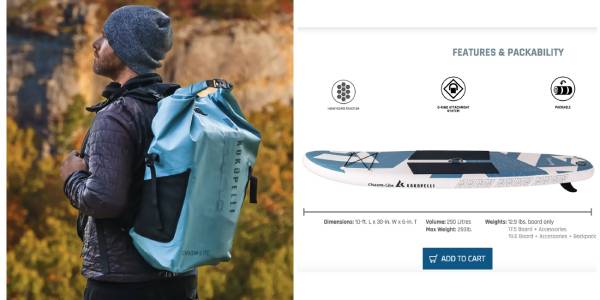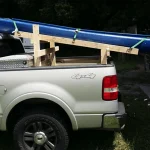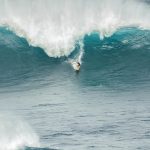Learning how to surf can be both exciting and life-changing, but it can also be slow and frustrating.
In addition to learning how to balance on a board and control it, you also need to learn about the ocean, how to read waves, and have excellent timing.
The surf conditions change all the time, so you never get to practice in the same conditions from one day to the next.
Surfing can be extremely rewarding, especially for those who put in the time and effort to get good at it. The best feeling in life is surfing on a clean, green face (except maybe driving through a spitting barrel, but that’s still in the future, so let’s focus on baby steps), and the first time you do it will be an experience you never forget.
The best way to learn how to surf is to take lessons from a skilled instructor and then practice as much as possible. There are a few things beginner surfers should know to have a good time surfing and respecting others in the lineup.
HOW TO FIND THE RIGHT SURF SPOT?
When you’re new to surfing, it’s important to find a surf break that is easy for beginners.
Here’s what to look for:
CHOOSING THE RIGHT CONDITIONS
In surfing, the conditions are always changing, so it’s important to choose the right ones.
Here’s what to look for when picking the best surf conditions as a beginner:
If you want to know when the conditions for surfing will be the best, you should get yourself familiar with a surf forecasting app. Not sure which one to choose? Check out this list of surfing apps here.
SELECTING A BEGINNER SURFBOARD
It is important to ride the right type of surfboard when you first start surfing. A surfboard that is stable and helps with the learning process.
Here’s what to look for:
This type of surfboard is made of soft foam and is less likely to injure you if you get hit by it. A surfboard that is around 8-9ft is ideal as it is easier to catch waves and is more stable. A surfboard needs volume to stay afloat.
Choose a board with lots of volume (100 litres +). Soft Fins: Beginner surfboards should have soft, flexible fins. If you were to get hit by one of these fins, it would not result in an injury.
SELECTING A WETSUIT
As a beginner, the type of wetsuit you wear is not as important as keeping you warm.
However as you progress and you’re looking for something a little more advanced, here’s what to look for:
WETSUIT THICKNESS
Wetsuits come in different thicknesses measured in millimetres.
They have more fat around the chest and back to protect the vital organs, and less fat on the arms and legs for flexibility.
A typical winter wetsuit will be thicker, with 5mm of neoprene in the torso and 3mm in the limbs. A spring suit, for warmer water, will generally have less neoprene, with 3mm in the torso and 2mm in the limbs.
The thickness will be different depending on how hot the water is.
WETSUIT FLEXIBILITY
The better you get at surfing, the more important flexibility will be for helping you move around on your board.
flexibility results in reduced durability, so keep that in mind when making any purchase.
This guide provides detailed information on wetsuit technology and what to look for when purchasing a wetsuit.
How to be a Good Beginner Surfer
If you want to learn to surf, you need to be okay with being bad at it at first. A kook is a surfer who is new to the sport. The term can also be used to describe someone who is clueless and rude in the water.
You don’t want to be the second kind of kook–a person who gets in the way and ruins people’s waves. Follow these surfing tips to be a good beginner surfer:
1. Choose appropriate waves to learn and surf
We all want to ride the best waves at the best spots, but when you are learning, there are certain lineups that you should avoid because they are beyond your ability level. If you try to catch waves at this level, you are more likely to get hurt and less likely to succeed.
Surfing experts recommend which waves beginners should surf, and it’s best to stick to those locations until you’ve become good at it. As you improve your surfing skills, only go to places that you feel comfortable with.
2. Don’t sit in the pack
When you first start surfing, you will likely be tempted to paddle out to where everyone else is sitting and waiting for waves. However, it is usually better to paddle out to a less crowded area where you can practice without worrying about getting in the way of other surfers. This is referring to the amusement park rides that are known to be the best. The problem is that you do not have the skills or knowledge about the ocean yet that would allow you to compete with others or stay out of their way.
This is not ideal surf conditions. Waves are infrequent and it’s easy to unintentionally ruin someone else’s surfing experience or, worse, injure them with your surfboard. Make sure you stay on the inside when you are just learning how to catch waves. You will interfere with other people’s waves if you don’t stay in your own zone.
Work your way up and improve your skills by waiting for scraps on the shoulder. As you get better, you’ll move up to the main lineup and have a better chance of getting waves. It is easier to catch waves on the shoulder, and you are less likely to impede others. Surfing on the shoulder is only safe if you are careful not to hit anyone with your board. Which brings us to tip number three…
3. Don’t drop in
Surfing is all about being one with the waves, and any surfer knows that the worst thing you can do is drop in on another surfer’s wave. This is considered a cardinal sin and should be avoided at all costs. Just don’t do it.
When a surfer paddles into a wave that is already being ridden, it is called “dropping in.” This can ruin the wave for the surfer who is already riding it, because the new surfer gets in their way.
Most surfing lineups around the world have a priority system based on who has waited the longest and/or who is farthest out. The person who is deepest in the water will catch the wave first.
It is bad manners to start riding a wave in front of someone who is already doing so. It is also dangerous. When you are surfing, always look behind you to see if anyone is coming down the line toward you. If they are, don’t go!
4. Don’t back-paddle
It is important not to back-paddle people when you are ready to join the pack and sit deep. Back paddling means paddling past the person in front of you so that you can catch the next wave, even if it is not your turn.
Some surfers, even experienced ones, do something unfortunately selfish. They are greedy and don’t respect others who are waiting to catch a wave. Even if everyone else is doing something, that doesn’t mean it’s the right thing to do. On crowded days it can get a bit confusing and hard to know whose turn it is, and you are likely to see people paddling past each other and stealing priority, but on most days you know who has been waiting the longest, and it’s poor form to back-paddle them and take the next wave.
5. Stay out of the way while paddling out
This is a difficult maneuver for beginners who are trying to surf in crowded or heavy waves (which, if you follow tips one and two, shouldn’t be a problem!). The person on the wave has the right of way, and it is the responsibility of the person paddling out to ensure they do not get in their way.
You will find that you are sometimes in the wrong place at the wrong time. You will have to decide whether to get in someone’s way or paddle behind them and get hit by the wave. If you find yourself falling behind another surfer, paddle behind them and accept the waves that come your way.
Getting pulled under the water or hit by the wave is not fun for anyone, but it is better than ruining someone’s wave. This will gain you some respect from the rest of the lineup.
NAVIGATING THROUGH THE WAVES
To reach the surfing area from the shore, you will have to push through the waves.
As a beginner there are two main techniques to do this:
NOSE FIRST TECHNIQUE
Lift the front of your board over incoming waves, keeping the nose of the board by your side, so that the waves roll underneath.
TAIL PUSH TECHNIQUE
Place yourself at the back of the surfboard and as a wave comes closer, push down on the back of the surfboard (lifting the front of the board up). This will allow the water to flow underneath.
Pushing through waves is dangerous and puts your surfboard in the path of oncoming waves. Only paddle around waves, never through them. The waves’ energy is strong enough to pick the board up and smash it into you. This hurts!
PADDLING Alright, now for the paddling.
There are two key concepts to pay close attention to when paddling:
MAXIMISE PROPULSION
Big, deep, long paddles. Arched back, and high elbows for maximum drive. It is better to have a few powerful paddles than a lot of weak paddles. You should aim to be more like an olympic rowing boat than a motorboat. Glide beats brute power.
MINIMISE RESISTANCE
Keep your legs together, and on your board. Body aligned down the centre of your board. Weight in the sweet spot.
POPPING TO YOUR FEET
There are many different techniques you can use to get up on your feet, depending on how far along you are in your progression.
If you are a beginner surfer, we recommend the following method.
It’s called the Aussie Pop-Up, and I’ll explain it below:
BREAKING DOWN THE AUSSIE POP-UP
- Come onto your board as we did when we were practising the prone technique.
- Begin your paddling. Remember, once the wave has collected you , you still need to paddle an extra three strokes just to be sure.
- Once you feel the wave has collected you, place your hands near the pectorals (chicken wing position).
- From here bring your back leg forward and cork your leg towards your body (lizard toe) – if your doing this right your back leg will be placed on top of the fins.
- Have your hips opened and slightly ajar.
- Look forward throughout the whole process.
- From this position, in one continuous movement, lift your body up whilst you press on your hands and your back leg.
- Your back leg will lock into place first at a 90 degrees angle, as you simultaneously swing your front foot through your hands and place it on the deck of the
- board at 45 a degree angle.
- From here, place both hands on either side of the body and continue to look forward.
- Bend your knees and ride the wave.




